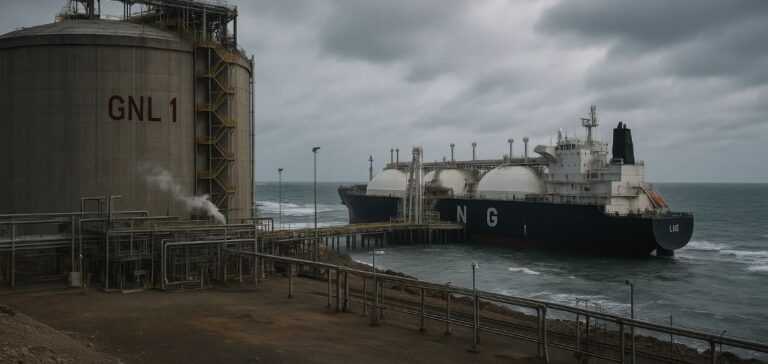Morocco is taking concrete steps to secure its energy supply with the launch of its first liquefied natural gas (LNG) terminal. The project, located at Nador West Med, is designed to meet the country’s growing demand for natural gas and to replace part of its coal-based power production. The LNG terminal will be a floating infrastructure that will serve both as storage and regasification, thereby diversifying supply sources and ensuring greater flexibility in managing imports.
A Strategic Project for Morocco
The LNG terminal, a floating storage and regasification unit (FSRU), will play a vital role in diversifying Morocco’s energy mix. Currently, the country heavily relies on imported natural gas via the Maghreb-Europe gas pipeline, and this terminal will provide a strategic alternative. Morocco plans to increase its regasification capacity to better meet the growing needs of its industry and residential areas, particularly along the Atlantic and Mediterranean coasts.
Supply and Growth Prospects
This terminal is expected to enable Morocco to import more than 1.5 billion cubic meters of LNG annually. It also represents a major investment for the country, both in terms of energy security and economic growth. LNG will become a key factor in meeting the country’s energy demand, which is expected to rise significantly in the coming years. Moroccan authorities estimate that natural gas consumption could reach 8 billion cubic meters by 2027.
Crucial Role in Morocco’s Energy Transition
In addition to securing energy supply, this project supports Morocco’s energy transition. It will help the country reduce its dependence on coal, the primary source of CO2 emissions, and strengthen its natural gas capabilities. The Nador West Med project is part of a long-term vision to enhance energy infrastructure while supporting sustainable growth objectives.






















